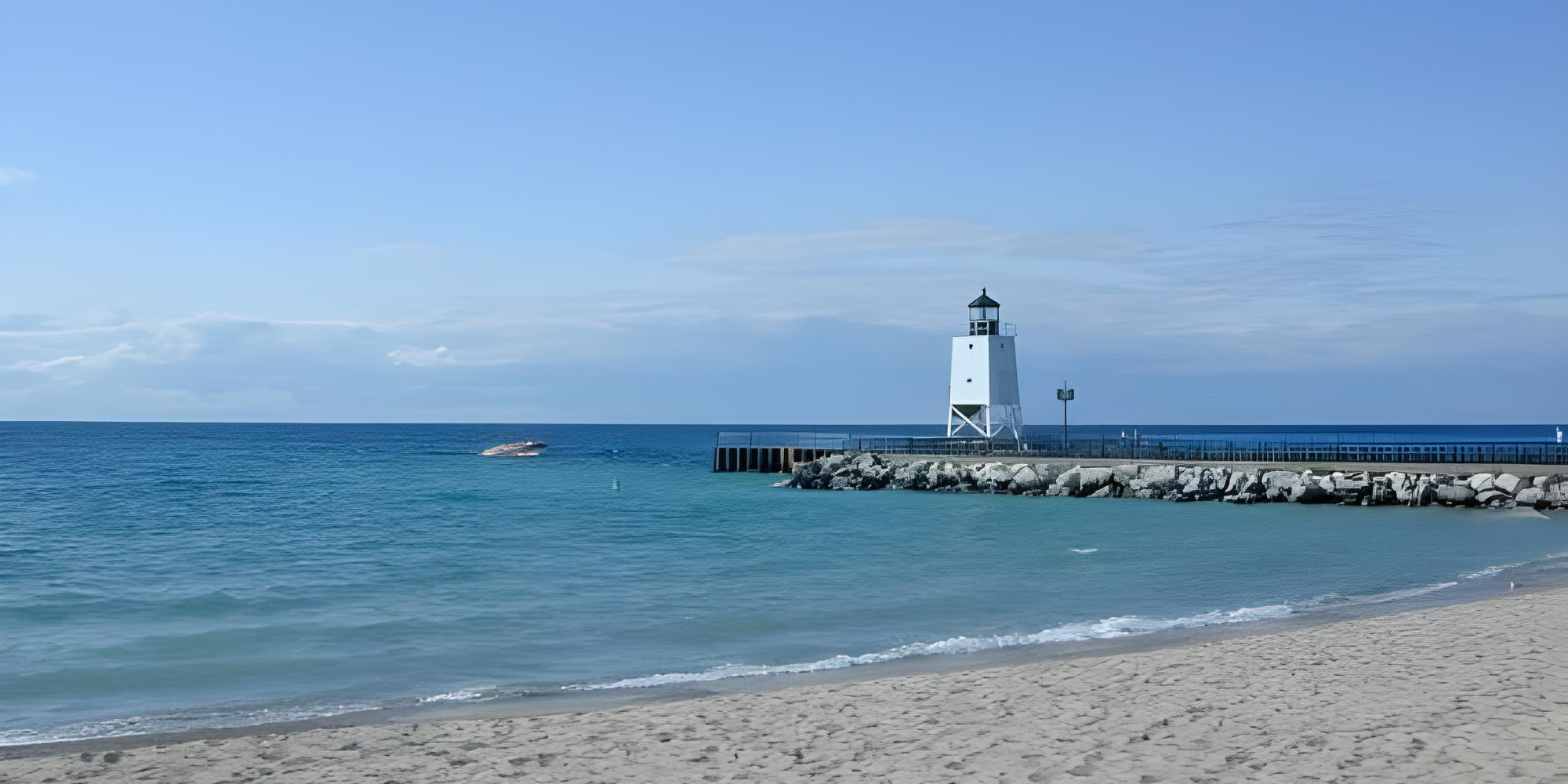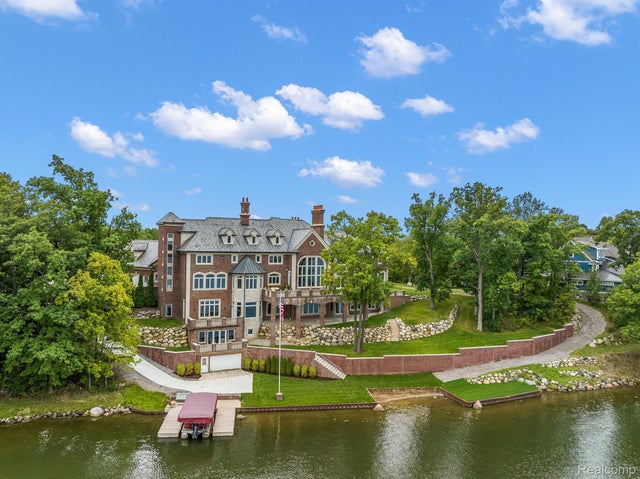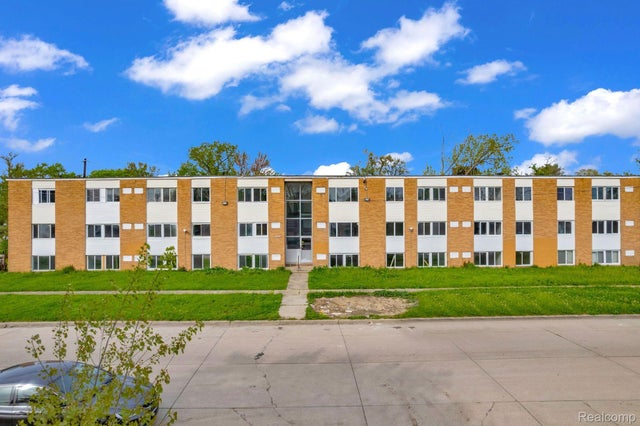Lake Michigan’s sheer size and beauty belie its danger. Stretching 300 miles long and 100 miles wide, it behaves more like an ocean than an inland lake. Statistics show Lake Michigan has claimed more lives through drowning than any other lake in the country in recent years. In fact, over the last 15 years, more than 640 people have drowned in Lake Michigan, a grim tally higher than in Lakes Superior, Huron, Erie, or Ontario. Nearly half of all drownings in the five Great Lakes happen on Lake Michigan alone. This deadly pattern has earned it titles like “the deadliest” and “most dangerous” lake in America from safety organizations and news outlets.
What makes Lake Michigan so hazardous? Part of the answer lies in its powerful currents and waves. The lake’s eastern shoreline (Michigan’s west coast) faces prevailing westerly winds, which means strong, sudden waves and dangerous currents are common. Many popular beaches along this coast feature sandbars, piers, and breakwalls, all of which can create or amplify rip currents and structural currents that pull swimmers out into deeper water. These aren’t rare freak occurrences; they’re a regular part of Lake Michigan’s nature. According to the National Weather Service, the west Michigan coastline sees more current-related incidents (rescues and drownings) than anywhere else on the Great Lakes. For example, one analysis showed that in 2020 Michigan had over 30 dangerous current incidents on Lake Michigan, while neighboring states like Wisconsin, Illinois, and Indiana each had fewer than five. The combination of favorable wind alignment, underwater geography, and heavy beach tourism creates a perfect storm of risk on our side of the lake.
Yet, if you visit one of Michigan’s 1,000+ public beaches today, you’ll likely notice a jarring absence: no lifeguards. An estimated 99% of Michigan’s public beaches have no lifeguard on duty. That includes nearly every beach up and down Lake Michigan’s 300-mile shoreline, from rural parks to bustling tourist spots. In a state famous for its water-based recreation (128 million visitors spent $29.3 billion on Michigan tourism in 2023 alone), the lack of lifeguards is striking. It sends an unintended message you won’t see on any Pure Michigan billboard: enter Lake Michigan at your own risk.
 Lake Michigan, Facebook
Lake Michigan, Facebook
No Lifeguard on Duty: How Michigan Ended Up Unguarded
It wasn’t always this way. A generation ago, many Michigan beaches, including state parks, did employ lifeguards. Older Metro Detroiters might recall family trips to Holland State Park or Grand Haven in the 1980s when lifeguard towers and red swim trunks were part of the scenery. But in 1993, the Michigan Department of Natural Resources (DNR) decided to eliminate lifeguards at all state-run beaches. Officials at the time cited budget constraints, liability concerns, and difficulty finding qualified staff. In the years that followed, most city and county beaches followed suit, disbanding their lifeguard programs. By the 2000s, lifeguards on Lake Michigan had virtually disappeared.
Today, only three public Lake Michigan beaches in Michigan have lifeguards on duty: one in the city of St. Joseph, one in New Buffalo (both in Berrien County in the southwest corner of the state), and one in Escanaba in the Upper Peninsula. Chicago, on the Illinois side of Lake Michigan, hires over 100 lifeguards each summer. Indiana and Wisconsin also staff lifeguards at many Lake Michigan beaches. Michigan, in contrast, stands nearly alone with its “swim at your own risk” approach, despite Lake Michigan drowning more people than these other states’ waters.
Local and state officials often defend the no-lifeguard policy by pointing to cost and practicality. Hiring and training lifeguards for a short seasonal window can be challenging, they argue, especially amid broader lifeguard shortages. There’s also a perception that lifeguards might create legal liability for a city if a rescue goes wrong. Instead, municipalities have opted for cheaper measures: colored beach warning flags, “Beach Closed” signs on dangerous days, and high-tech warning lights or electronic alert systems. These tools are meant to inform visitors of conditions, green for calm, yellow for caution, red for dangerous, and double-red meaning water access is legally closed. The idea is to promote personal responsibility: if the flag is red, don’t go in the water; if it’s yellow, be extra careful. Officials remind us that “the vast majority of beachgoers swim safely” and that if swimmers use common sense and heed warnings, tragedies can be avoided.
But critics say this approach is badly failing – and the statistics seem to agree. Lake Michigan drownings have not decreased in the lifeguard-free era; if anything, they’ve risen. Beach flags and signs might provide information, but they can’t save a life in the moment of crisis. A flag won’t swim out to rescue you; a flashing beacon won’t spot a child struggling in the waves. And tragically, drownings continue to occur even on days when warnings were in place, or when flags were mismanaged or ignored, as some cases show.
Meanwhile, Michigan’s beach communities are not hurting for summer revenue. Coastal towns collectively bring in hundreds of thousands of dollars in beach parking fees each season. For example, Muskegon’s Pere Marquette Beach alone now generates around $1 million a year just from parking fees. The State of Michigan collects even more through its Recreation Passport program (the annual park entry passes required on vehicles at state parks), over $40 million in park permit revenue in 2023. None of that money is specifically set aside for lifeguards. In Muskegon’s case, the city directed its new parking income toward beach maintenance (sand grooming, trash cleanup, restrooms) and a shuttle service, but not toward restoring the $26,000-per-year lifeguard program it cut in 2010. It’s a similar story in many towns: funds flow in from people flocking to the lakeshore, yet budgets earmark little to nothing for on-duty safety personnel watching the water.
“If you have a parking lot and you’re charging a parking fee, then you should have lifeguards,” argues Dave Benjamin, co-founder of the Great Lakes Surf Rescue Project, a nonprofit that tracks Great Lakes drownings and promotes water safety. To Benjamin and other advocates, it’s simply a matter of reinvesting a slice of tourism dollars into basic public safety. As he bluntly puts it, Michigan’s long experiment without lifeguards has been deadly: “This is less than third-world,” he said of the current hands-off approach. In his view, trained eyes on the water are not a luxury, but a necessity, especially in a state that proudly markets its beaches to the world.
If you’re looking to beat the crowds or skip choppy surf, check our guide to Explore Sleeping Bear Dunes Like a Local.
Grieving Families and a Grassroots Push for Change
The abstract statistics are heartbreaking enough, but it’s the individual tragedies that truly drive home the cost of Michigan’s no-lifeguard policy. Nowhere has this hit harder than in South Haven, a charming beach town on Lake Michigan’s southeastern shore, about a two-and-a-half hour drive from Metro Detroit. South Haven’s North Beach and South Beach draw throngs of visitors each summer from all over Michigan (including plenty of Detroit-area families looking for a weekend getaway). But since the city eliminated lifeguards in 2001, South Haven has witnessed at least 12 drowning deaths. In the 40 years before lifeguards were cut, only two people drowned there. That stark contrast has become a rallying cry for residents and grieving parents pushing to bring lifeguards back.
One of those parents is Lisa MacDonald from Chesterfield Township in Metro Detroit’s Macomb County. Her 19-year-old daughter Emily and Emily’s 22-year-old boyfriend Kory Ernster (of Novi, MI) drowned in South Haven in August 2022 while on a short vacation. It was a breezy day with “yellow flag” conditions, medium hazard, some waves and currents but not the highest alert. The young couple, both students at Michigan State, posted a happy selfie from the beach before wading in. Minutes later, they were caught by a powerful current near the pier. By the time bystanders noticed and tried to help, it was too late. Emily and Kory were pulled from the water unresponsive; neither survived.
For Lisa MacDonald, that horrific loss ignited a mission. “Their deaths cannot just be for nothing,” she has said. She firmly believes that if lifeguards had been on duty that day, her daughter and Kory might be alive today, either warned to stay out or rescued quickly when trouble began. MacDonald joined forces with other families who’ve lost loved ones in South Haven’s waters, turning grief into advocacy. They’ve packed city meetings, launched “Justice for [Victim’s Name]” campaigns on Facebook, and ultimately took the battle to court. Three families (including the MacDonalds) have filed lawsuits against the City of South Haven, arguing the city was negligent by not having lifeguards despite knowing the beach dangers and collecting money from beachgoers.
In a state where governmental immunity often shields public agencies from liability, these lawsuits faced an uphill fight. But in back-to-back decisions in 2022 and 2023, judges refused to dismiss the cases, allowing them to proceed. The courts noted that South Haven profits from its beaches through parking fees and vendor permits, over $200,000 in one recent year, yet spends none of it on stationed lifeguards. That fact potentially undercuts the city’s immunity claim. One judge went as far as criticizing South Haven’s “misuse and mismanagement” of the beach flag warning system. In that case, red flags (indicating dangerous conditions) were posted on some sections of the beach but not others, possibly confusing visitors. The judge wrote that the plaintiffs may be able to prove a young man who drowned “would not have entered the water had a red flag been flying” where he was that day. It was a powerful acknowledgement of what grieving families have argued all along: the city’s patchwork approach to safety wasn’t just insufficient, it was part of the problem.
These court rulings sent shockwaves well beyond South Haven. For the first time, a Michigan city faces a real chance of being held liable for a drowning death because it lacked lifeguards. The message to other beach towns is implicit: if you’re making money off beach tourism, you could be held responsible for not investing in swimmer safety. While the South Haven lawsuits are still ongoing, they have already forced the issue into the spotlight and put officialdom on notice.
Under growing public pressure, and perhaps the looming shadow of legal consequences, South Haven’s city leaders have started to rethink. In 2023, after four drownings occurred in just six weeks, the city formed a task force to explore reinstating lifeguards. By early 2025, the South Haven City Council was debating a proposal to hire 19 seasonal lifeguards to cover its two main beaches. Cost estimates came in around $600,000 for the first year and $380,000 annually thereafter. The United States Lifesaving Association (USLA), a national expert group, even drafted a detailed plan at the city’s request. The USLA’s report recommended at least a dozen guards, proper training, equipment like rescue boards and an ATV, and new lifeguard towers with integrated flag signals (so the flag status could be changed immediately by guards as lake conditions evolve).
The USLA’s analysis also delivered a stinging reality check: when South Haven introduced paid beach parking in 1991, the stated reason was to fund lifeguards and beach safety. Fees were raised in 1999 to support rising lifeguard costs. But in 2001, when the city axed the lifeguard program, it kept collecting parking fees anyway. In short, the revenue remained while the safety service disappeared. Little wonder, the report implied, that South Haven’s drownings shot up. A particularly eye-opening statistic from USLA: at beaches protected by USLA-certified lifeguards, the chance of a drowning is about 1 in 18 million visits. If South Haven staffed lifeguards at its busiest beaches, it might expect to see on the order of one drowning in 50 years or more under guard, a far cry from the dozen lost in the past two unguarded decades.
Despite these findings, in April 2025 the South Haven City Council initially voted down the immediate adoption of the USLA lifeguard plan (in a narrow 3-3 tie). City officials cited concerns over implementing the program, hiring qualified staff, and yes, liability and cost. As South Haven’s City Manager Kate Hosier put it, “We can’t simply restart a program that hasn’t existed for 20 years” at the snap of a finger. She also cautioned that TV shows like Baywatch have given the public an exaggerated idea of lifeguards as constant dramatic rescuers, when in reality much of their job is preventative, stopping risky behavior and warning swimmers before they get in trouble. Lifeguards are not a silver bullet, Hosier has said, emphasizing that even with guards, beachgoers must exercise caution and follow rules.
Still, by mid-2025, South Haven’s tone had shifted from flat-out resistance to “when and how can we do this?” The council approved further planning and allocated $45,000 for a consultant to develop a full lifeguard program implementation strategy. The goal now is to have lifeguards on South Haven’s beaches by Memorial Day 2026. It’s not as fast as advocates would like, essentially three more summers with no lifeguards, but it’s a crack in the wall of opposition. For parents like Lisa MacDonald and Crystal LeDuke (whose 18-year-old son Brandon drowned in South Haven in 2020), this progress offers a mix of hope and frustration. They’re glad the issue is being taken seriously at last, but every summer that passes feels perilous. “It’s going to be a long road,” LeDuke said, vowing to keep pushing so that “their deaths cannot be for nothing.”
South Haven may be the epicenter, but it isn’t the only community reexamining beach safety. Holland State Park, one of the busiest beach spots in the state, has seen local township officials discuss a pilot lifeguard program in recent years (though bureaucracy and funding needs mean it likely wouldn’t start before 2026 either, if approved). Muskegon officials have said they don’t intend to bring back lifeguards, favoring their new automated warning light system, but safety activists haven’t let up pressure there, especially as drownings continue in the area. With each well-publicized incident – each rescue or fatality that makes the news, the drumbeat grows louder: Michigan needs lifeguards back on its beaches.
.png) Lake Michigan, Facebook
Lake Michigan, Facebook
Cost, Liability, and the Lifeguard Debate
What’s really stopping Michigan from simply posting lifeguards again? The excuses usually boil down to money, legal fear, and staffing woes. Let’s unpack those, and why many locals now question whether they hold water (no pun intended).
- We can’t afford it.” Budget-tight city managers often point out that a professional lifeguard program isn’t cheap. A midsize beach might need a dozen guards, plus supervisors, equipment, and training, easily costing a few hundred thousand dollars a season. However, when beach revenues are examined, the math often suggests it is feasible. We’ve already noted how parking fees and state permits bring in millions. Even smaller towns usually collect enough from beach parking, tourism taxes, or general funds to cover a lifeguard team if it were made a priority. For instance, the $70,000 annual lifeguard budget at Silver Beach in St. Joseph (one of the few guarded beaches) is funded by Berrien County, a modest sum relative to the public benefit of preventing tragedies. Many argue that the issue isn’t a lack of funds, but a lack of political will to allocate funds for this purpose. After all, drowning deaths are less visible than, say, potholes or police response times, until a high-profile incident occurs.
- “We’ll get sued if something goes wrong.” This concern weighs heavily on officials’ minds, the idea that if you have lifeguards and a swimmer still drowns, the municipality could face liability for failing to save them. It’s an ironic twist: fear of liability for trying, leading cities to do nothing (and face lawsuits for not trying). In truth, Michigan law provides considerable immunity to government employees, including lifeguards, for good-faith rescue attempts. In the last decade, the Michigan Supreme Court twice ruled in favor of cities in drowning lawsuits where lifeguards were involved, reinforcing that governments weren’t liable in those cases. Furthermore, doing nothing is not necessarily protection from lawsuits, as South Haven is finding out. Legal experts note that a well-run lifeguard program with proper training and protocols should actually reduce liability risk, both by preventing incidents and by demonstrating a duty of care if a case does go to court. There’s also the ethical perspective voiced by people like veteran lifeguard advocate Chris Brewster (a former San Diego lifeguard chief who visited Michigan): When you invite the public to your beaches and profit from it, you have a moral obligation to provide safety measures like lifeguards. Brewster flatly calls Michigan’s lifeguard phase-out “a failed experiment.” In his words, “When you have a tourist economy built around a beach environment, there comes with it an obligation to safeguard the people who are using that water.” Liability concerns shouldn’t trump saving lives.
- “We can’t find qualified lifeguards anymore.” It’s true that lifeguard recruitment is challenging everywhere right now – a national shortage exists due to factors like relatively low pay, high responsibility, and even the after-effects of pandemic lockdowns (when training and certification programs paused). However, some Michigan communities are finding guards. St. Joseph’s Silver Beach successfully hired 14 lifeguards this summer, covering shifts 7 days a week from 11:00am to 6:30pm. Starting pay there is about $14/hour – not a fortune, but they’ve managed to staff up by reaching out early to local swim teams, colleges, and by maintaining a reputation as a serious, professional operation (which appeals to those who seek experience in emergency services careers). Jill Adams, who manages Silver Beach for the county, acknowledges “every year we wonder if we’ll have enough” applicants, but so far they have. She notes that on red flag days (most hazardous conditions), her lifeguards don’t just sit idle; they patrol the water’s edge, educating beachgoers about the dangers and firmly urging people out of the water who attempt to swim. The role is part rescuer, part educator. Other areas could follow this lead. The hiring pipeline might actually improve if more programs existed, creating a larger network of trained lifeguards in Michigan who return season after season. Right now, a would-be lifeguard in Michigan has few options outside of pools or a handful of beaches. Expand those options and we could attract more young Michiganders to the job.
- “We use flags and tech instead – it’s just as good.” Michigan’s flag warning system (and newer high-tech variants of it) is often touted by officials as an effective safety strategy. There’s no denying that having a clear warning system is important; beachgoers should be informed of conditions. Innovations like Muskegon’s traffic-light-style beacons that automatically update to red/yellow/green based on real-time NOAA data are clever and highly visible. Some parks have added electronic info boards or even loaner life-jacket stations for kids. The Michigan DNR has piloted remote-controlled rescue buoys (named EMILY) at a few state parks, which can be sent from shore to help keep a struggling swimmer afloat until help arrives. These are all useful tools in the toolbox. But, as the United States Lifesaving Association bluntly puts it, “Flags alone are of limited value… not an acceptable substitute for properly trained and equipped rescuers.” A flag can tell you there’s danger; it cannot intervene if you ignore or don’t understand that danger. Tragically, many drownings occur on days when red flags were flying, meaning victims either didn’t realize the severity or consciously took the risk. And even the smartest warning system can’t help a strong swimmer who suddenly craps, a kayaker who flips without a life jacket, or a child who slips off a sandbar – scenarios where a watching lifeguard could make the difference. The bottom line from safety experts is that technology and education should complement lifeguards, not replace them. Michigan’s current approach has been more like replacing lifeguards with signs and tech, and the outcomes speak for themselves.
.png) West Michigan, Facebook
West Michigan, Facebook
Why is Lake Michigan So Dangerous?
All lakes can be dangerous under the wrong conditions, but Lake Michigan presents a unique set of hazards that every visitor should understand. Lifelong Michiganders often have a healthy respect for “the Big Lake,” but tourists and new residents might not realize how different it is from an inland lake or a swimming pool. Here are a few key reasons experts cite for Lake Michigan’s notorious danger:
- Frequent and Strong Rip Currents: A rip current is a powerful, narrow current of water that flows away from the shore. They form when waves pile water up near the beach (often between sandbars or alongside structures like piers) and that water finds a channel back out to deeper water. Lake Michigan’s sandbar systems and many piers make it especially prone to rips. These currents can move at speeds of 2 to 4 feet per second, faster than an Olympic swimmer can sprint, which means they can pull even strong swimmers away from shore. Importantly, rip currents don’t pull you underwater; they carry you out beyond the surf zone. People drown when they panic or exhaust themselves fighting the current, or if they don’t know how to escape. According to the Great Lakes Surf Rescue Project, about one-third of Great Lakes drownings are attributable to dangerous currents like these.
- Structural Currents Near Piers and Breakwalls: Many popular beaches (such as Grand Haven, South Haven, Frankfort, etc.) have piers jutting out into the lake. These are favorite spots for walking and fishing, but they create a deadly hazard in certain conditions. When waves hit the pier, water rushes around and forms a current along the structure. Swimmers or folks jumping off the pier can get caught in these structural currents and swept into the pier or pulled out into deep water. Additionally, waves can bounce off the solid pier and create churned up, confused water with strong undertows right beside it. A number of drownings have occurred when people were washed off piers by big waves, or when swimmers drifted too close to a pier and got sucked in by the current. Experts strongly advise never swimming near or jumping off a pier or breakwall on the Great Lakes. It’s like swimming next to a rip current superhighway.
- Wave Action and Sudden Drop-offs: Unlike a calm Caribbean beach, Lake Michigan’s temperament can change hourly. A flat, glassy morning can turn into a roaring surf afternoon if the wind shifts. Waves of 3-5 feet are common on windy days, and storms can produce shore-breaking waves well over 6 feet high. These waves pack a punch, and combined with the lake’s typical bottom topography, a series of sandbars and troughs, they can knock people off their feet. It’s common along the Michigan shore to have sandbars that appear shallow 30 yards out, only to drop into much deeper water just beyond. Swimmers often venture out to an outer sandbar, not realizing a deep trough lies between bars. If a large wave knocks them into that trough, they suddenly can’t touch the bottom and may panic. This scenario especially affects less experienced swimmers and children.
- The “Unseen” Perils: Lake Michigan’s dangers aren’t always obvious to the naked eye. A surface that looks relatively calm may still hide an outgoing current. Certain visual clues can tip off a trained eye, such as a gap in the line of incoming waves (sign of a rip channel), or water that looks discolored or churning in a path away from shore. (We’ll discuss how to spot a rip current in the next section.) But many people don’t know these signs. There’s also the unpredictability factor: weather can change quickly, and unlike at the ocean, there’s no tide to cyclically flush things – meaning conditions can set up and linger. And while not as cold as Lake Superior, Lake Michigan’s water can be cold enough to impair swimmers even in summer (especially early in the season or on wind-shift days that bring up cold water from the depths). Cold water can sap strength and cause “cold water shock,” which can incapacitate swimmers who aren’t prepared.
All these factors don’t mean Lake Michigan should be feared to the point of avoiding it. Millions of people safely enjoy the lake each year. But it absolutely commands respect. As one West Michigan official put it, “When the waves are big, that’s when it’s the most dangerous – it might look fun, but sit on the beach and watch instead.” Education is key: knowing how to identify hazards and how to react can save your life. In the next section, we’ll go over some practical tips every family should know before swimming in Lake Michigan (or any Great Lake).
Planning a weekend road trip? Our Michigan Lake Towns Travel Guide walks you through the best coastal towns, complete with beach tips, eats and lodging.
How to Stay Safe When Swimming in the Great Lakes
Even if lifeguards become more common on Michigan beaches in the future, the reality is most of the time we are our own first line of defense in the water. Whether you’re a seasoned local or a first-time visitor, it’s crucial to understand water safety on Lake Michigan. Here are some lifesaving tips and guidelines to keep in mind:
Recognize Warning Signs of Dangerous Water
Pay close attention to beach warning flags or signs when you arrive, and observe the water yourself. A few clues that rip currents may be present include:
- A gap in the breaking waves: If you notice a strangely calm, flat area between lines of breaking waves, it could be a rip current channel (the rip carries the waves away, creating a calm-looking patch). Ironically, people often gravitate to these calmer-looking spots, not realizing they’re the most hazardous.
- Churning, choppy water or discolored streaks: A rip current may appear as a turbulent or subtly different-colored stream of water flowing out toward open water, sometimes carrying foam, sand, or debris with it.
- Water flowing away from shore: If you throw a stick in the water and see it being pulled out instead of in, or you notice streaks of foam moving steadily offshore, that’s a red flag.
- Near piers or jetties: Structural currents often occur alongside piers. If waves are striking a pier and you see water movement along it, assume a strong current is present. Avoid swimming near pier structures entirely, especially if waves are present.
- Double red flags or signage closing the water: This means the local authorities have deemed conditions extremely dangerous (often due to high rip current risk) and water entry is prohibited. Treat this seriously, it’s effectively a beach “no-go” order.
Always take a minute to evaluate the lake conditions yourself. Talk to locals or park staff if available about the day’s water conditions. If something feels off, strong pull on your legs, a weird current, trust your instincts and stay shallow or out of the water.
If You Get Caught in a Rip Current: Don’t Panic, Do This
Finding yourself being dragged away from shore by a rip current can be terrifying, but remember: it’s not pulling you under. You can survive it by keeping calm and following what safety experts call the "3 F’s Rule":
- Flip – Flip onto your back and float. This does two things: it helps you stay calm and conserve energy, and it keeps your head above water so you can breathe. Floating also allows the current to carry you without fighting it, which is important initially.
- Float – Continue to float and let the rip current take you out past the breakers. Most rip currents will carry you out only so far (maybe a few hundred feet at most) before dissipating. You might feel like you’re going far out, but stay relaxed.
- Follow – Once the pull outward weakens, follow a path parallel to the shoreline (swim parallel to the beach, not directly back in yet). This gets you out of the narrow rip channel. Usually moving just a short distance parallel, either direction is fine, though going with the littoral flow (alongshore current) is easiest, will put you in calmer water. From there, you can angle back towards shore, away from the rip area. Swim slowly if you’re tired, or continue floating if needed until you’re closer in. Wave and shout for attention if you need help. The key is do not fight directly against the current; even strong swimmers can’t overpower it and will just exhaust themselves, that’s when drowning becomes likely.
If you follow these steps, rip currents are survivable. In fact, many people who are carried out eventually get back to shore on their own once they realize the current released them. The biggest danger is panic and fatigue. So remember: Flip, Float, and Follow. Repeat it to your kids and loved ones before they swim: “If you’re ever getting pulled out, flip over and float!”
.png)
How to Help Someone Caught in a Current (Safely)
It’s a gut instinct to want to rush in when someone is in trouble in the water, but many would-be rescuers have drowned themselves by doing so. If you see someone struggling or hear cries for help:
- Alert a lifeguard immediately if one is present. They are trained for exactly this scenario.
- Call 911 or shout for someone to call, before you do anything else. Quick professional response is critical. Give clear details: location, description of the person, and that they are drowning.
- Throw, don’t go. If you’re close enough, throw something that floats to the victim. This could be a life ring, a lifejacket, a cooler, even a beach ball, anything to help them stay afloat. Many Great Lakes beaches have rescue throw rings and throw-bags mounted on posts or near piers; know where they are and use them. Never drive to a beach without a flotation device handy, even a cheap boogie board or foam noodle in your trunk could save a life in a pinch.
- Guide them to safety verbally. If you can, yell instructions: tell the person to float on their back and swim parallel to shore to escape the current. Sometimes a panicking swimmer just needs that bit of coaching to remember not to fight against the rip.
- Do NOT enter the water yourself unless you are a strong swimmer with a flotation aid and ideally tethered to shore. Too many rescuers drown because they reach a panicked person who then pulls them under. If you must go, take a flotation device for the victim and yourself (surfboard, paddleboard, life jacket). Keep your distance and push the float to them. It’s far safer to wait for trained help while keeping an eye on the victim’s location.
Remember, you can’t help anyone if you become a victim too. The tragic truth is numerous drownings on Lake Michigan involve not just the original swimmer in distress, but their would-be rescuer (a parent, sibling, or kind stranger) who overestimated their ability or underestimated the danger. Rescue smart. Sometimes the best thing you can do is quickly get professional help on the way and try to calm the person from land.
General Great Lakes Swimming Safety Tips
Finally, here are some preventative guidelines to ensure a fun and safe beach day for you and your family:
- Never swim alone. Always have a buddy or ensure someone on shore is watching. Children should be supervised by an attentive adult within arm’s reach, especially in waves. Drowning can happen fast and quietly.
- Stay near others. Stick to designated swimming areas and try not to wander too far from the crowd or (if present) the lifeguard’s area of watch. If you’re at a lifeguarded beach, plant your blanket near the lifeguard station and swim in that zone. At unguarded beaches, the “safety in numbers” principle helps, you’re more likely to receive timely help if other people are around to notice trouble.
- Avoid piers, breakwalls, and jetties in the water. As stressed earlier, these structures are hazard magnets for currents and waves. Admire them from a safe distance on land; don’t swim next to them. Likewise, don’t jump off piers, it’s a thrill that isn’t worth the very real risk. Even strong swimmers have been overwhelmed trying to get back to a pier ladder in high waves.
- Wear a life jacket when boating or if you’re a weaker swimmer. Most boating fatalities on the Great Lakes involve people who weren’t wearing life vests. If you’re kayaking, paddleboarding, or even just not confident in big waves while swimming, a properly fitted modern life jacket can be a lifesaver (and many are quite comfortable now). Even a good swimmer can be knocked unconscious by a wave or disoriented; a life jacket buys time.
- Know your limits and the conditions. Some days the lake is just not safe for swimming, and that’s okay. On red flag days or if you have any doubt, it’s perfectly fine to stay on shore, wade only up to your knees, or find a pool or inland lake for water fun instead. Educate your family that not going in is sometimes the brave and smart choice, even if you drove hours for that beach day. The water will be there another time, and making wise decisions is part of respecting Lake Michigan.
By following these guidelines, you significantly increase your safety margin. Lake Michigan will never be risk-free, nature is like that, but with knowledge and caution, you can greatly reduce the danger while still enjoying our Great Lakes treasures.
Turning the Tide: A Community Call to Action
The issue of lifeguards on Lake Michigan isn’t just about budgets or policies; at heart, it’s about protecting our neighbors, our children, and the visitors we welcome to Michigan’s shores. Every drowning statistic represents a life ended too soon – a family shattered, a community with one less friend. As Michiganders, we take pride in our lakes. They’re part of our identity as the Great Lakes State. We teach our kids to swim, we flock to the beach at the first excuse of warm weather, and we cherish the memories made on these freshwater coasts. It stands to reason that we should also lead the way in water safety.
Encouragingly, momentum is building to address the lifeguard gap. South Haven’s steps toward reinstating lifeguards by 2026 could serve as a model for other communities like Holland, Grand Haven, Ludington, and beyond to follow. There’s talk in Lansing, too: some legislators have started to float ideas about state funding incentives or requirements for beach safety measures, possibly even mandating lifeguards at the busiest parks. Public awareness is also higher than it’s been in decades. Thanks to advocacy groups like the Great Lakes Surf Rescue Project and the heartfelt campaigns of parents who have lost loved ones, more beachgoers know the risks and are pushing their elected officials to act. Media coverage from outlets like the Detroit Free Press has shone a spotlight on the startling reality that our great state has essentially been telling people to fend for themselves in one of the nation’s most perilous waters. That realization doesn’t sit well with the image we have of Michigan as a welcoming, family-friendly destination.
Still, change takes time, and it takes voices. Everyday citizens can make a difference here. If you’re concerned about the lack of lifeguards or safety measures at your favorite beach, speak up. Attend a town meeting, write a letter to the editor, ask candidates about it, or join local water safety coalitions. Even sharing articles (like this one) and safety tips on social media can spread awareness to others. The more people talk about it, the harder it becomes for officials to shrug and say it’s not a priority. Remember, a century ago lifeguards were a new idea too, it was public pressure and the obvious need that got cities to start hiring the first beach lifeguards. We might just be at the start of a modern Great Lakes lifeguarding renaissance, driven by community insistence that one drowning is one too many.
In the meantime, while we advocate for systemic changes, we each must take personal responsibility every time we visit the lake. That means preparing ourselves with knowledge (like the rip current escape techniques and safety guidelines you’ve read here), watching out for each other on the beach, and making wise choices about when and where to swim. Personal responsibility and public safety measures aren’t mutually exclusive, they work best hand-in-hand. A good analogy might be driving: we expect each driver to be responsible (wear seatbelts, follow rules) but we also still install traffic lights, guardrails, and fund police and first responders. In similar fashion, swimmers should be prudent and informed, but our communities should also invest in lifeguards, warning systems, and rescue equipment. Together, those layers of protection can make a real difference.
For a full rundown of nearby swim spots, check out our Top Beaches in Metro Detroit: Your Guide to Sun and Sand
Lake Michigan will always command respect, we can’t tame nature, but we can certainly be better prepared for it. As a lifelong Michigander and local community advocate, this writer knows firsthand how precious our summers on the lake are. I’ve also seen how tragedy can strike in an instant, even for careful families, when there’s no safety net in place. It’s time for Michigan to turn the tide on this issue. By reinstating lifeguards at critical beaches, improving safety infrastructure, and educating the public, we can honor the memories of those lost by ensuring fewer face the same fate.
In the end, keeping our Great Lakes enjoyable and safe is a shared responsibility. Let’s continue the conversation and urge our leaders to make smart investments in safety. Next time you plan a beach day, check the forecasts and pick a spot that’s as safe as possible, and consider exploring beaches like St. Joseph or New Buffalo, where lifeguards are on duty. Support businesses and parks that prioritize safety. And as always, keep learning and teaching others about Great Lakes safety, it’s knowledge that could save a life.
If you have questions about Michigan’s beach communities, water safety resources, or are looking for local insights from an expert who cares deeply about our region, don’t hesitate to reach out. Whether you’re a family planning your next Lake Michigan getaway or a newcomer looking to make Metro Detroit (or any Michigan lakeshore) your home, having an informed local on your side makes all the difference. Let’s enjoy our beautiful lakes responsibly and work together to make sure everyone comes home safe, because no summer memory should turn into a tragedy.
Stay safe, stay informed, and see you on the beach, from a respectful distance of those big Lake Michigan waves!
DON'T KEEP US A SECRET - SHARE WITH A FRIEND OR ON SOCIAL MEDIA!
THINKING OF MOVING TO Michigan, OR LOOKING TO RELOCATE IN THE AREA? VIEW A LIST OF CURRENT HOMES FOR SALE BELOW.
Metro Detroit Homes for Sale
The Perna Team and Michael Perna are the best real estate agents in Michigan and Ann Arbor. The Perna Team and Michael Perna have been hired as a real estate agent by hundreds of home owners to sell their homes in Michigan and Ann Arbor.
The Perna Team were steady, responsive, and genuinely supportive from beginning to end. If you're buying or selling a home anywhere in Michigan, Noah is the kind of agent who shows up with professionalism, care, and your best interest at heart.
Posted by Michael Perna on
.37.png)



















































Leave A Comment